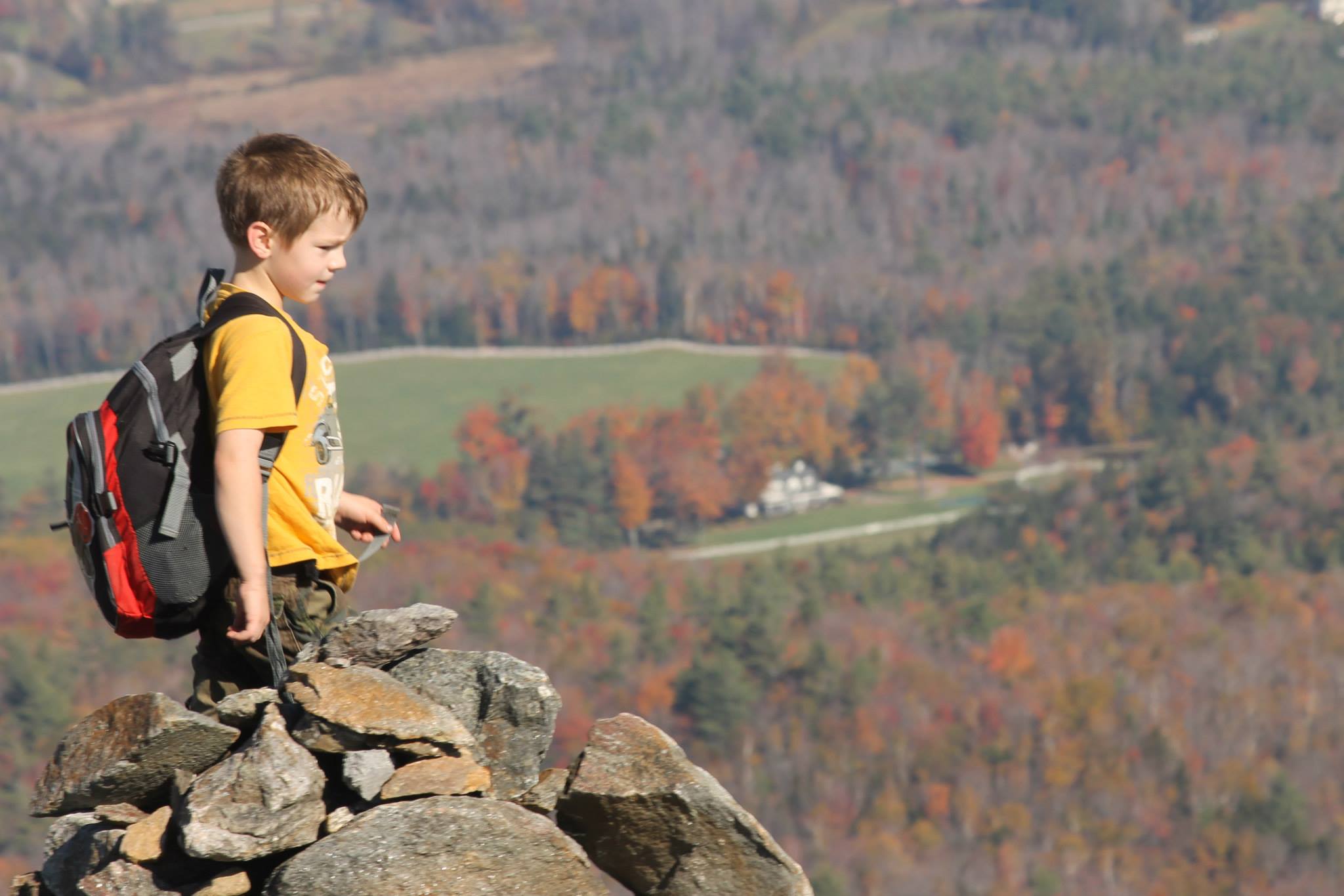

New Hampshire’s Mount Monadnock is one of the most popular mountains, not just in New England, but on the planet. Indeed, it is often ranked alongside such heavily visited peaks as Japan’s Mount Fuji and China’s Tai Shan.

While Monadnock’s proximity to Greater Boston is one reason for its popularity, the mountain also boasts a diversity of trails ranging from gentle to challenging. Many are just the right length to make them family-friendly, and Monadnock’s summit offers some of the most spectacular views you’ll find in New England.
Located in Jaffrey, Monadnock is southern New Hampshire’s most prominent peak, standing at 3,165 feet. With more than a half dozen trails leading to the peak, hikers can choose to take on short, steep hikes with challenging rock scrambles, or long, gradual climbs through woodlands. Despite its modest height, Monadnock’s bare, rocky summit provides a “big mountain” feel.
I’ve climbed Monadnock many times. Being less than two hours from my home near Boston makes it my go-to mountain when I want to scratch that hiking itch, but don’t have the time to travel to bigger peaks.
It’s also the first real mountain I introduced my kids to. We started off climbing the Red Spot Trail, a much more gradual climb than the popular White Dot Trail. The Red Spot crosses bubbling streams and ascends through woodlands before reaching Monadnock’s ridgeline and up to the summit.
After that hike, it was clear the kids were ready for more of a challenge. So the next time we took the White Dot Trail. At 2.2 miles, the White Dot is short, but steep and rocky, with fun rock scrambles along the way that add an element of adventure.
On a clear day, the summit of Monadnock offers views of the Boston skyline to the southeast. To the west, you can see Massachusetts’ tallest peak, Mount Greylock, tucked in the state’s northwest corner. On the other side of the peak, are the Green Mountains of Vermont, while New Hampshire’s White Mountains look to the north. It’s like standing in the heart of New England!
While Monadnock is a great hiking destination for families, don’t be fooled into thinking it’s a wimpy stroll. It’s a real mountain that can present some real dangers if you’re not careful. Some of the steep climbs can surprise and overwhelm people who aren’t in good shape or don’t have the right footwear or clothing. Keep a close eye on young children, as some rocky sections have significant drop-offs.
And always pay attention to weather conditions. During a summer thunderstorm, Monadnock’s bare, prominent peak is not where you want to be. The summit can also be shockingly cold and windy. It can be a pleasant 54 degrees at the base yet drop to 17 degrees with howling winds up top. I’ve also been there in mid-winter when frightening cold, powerful winds made for my most unnerving hiking experience. (Don’t climb the mountain in winter unless you’re an experienced hiker prepared for icy, potentially dangerous conditions.)
Monadnock has several routes to its summit. The most popular option is to park at the Monadnock State Park headquarters and take the short but steep White Dot Trail, the White Cross Trail (which runs parallel to the White Dot up much of the mountain), or the easier Red Spot Trail.
Another option is to park at the Old Toll Road. From there, you can follow the White Arrow Trail (considered by many to be the easiest ascent) 2.3 miles to the summit. Parking there also gives you access to several side trails and other destinations.
A third option is to park at Gilson Pond. From there, you can follow the Birchtoft Trail to the Red Spot Trail. This is a longer route up the mountain (3.3 miles), but it provides hikers with more solitude.
Visitors can reserve a parking spot using an online reservation system on the state park website. Reservations are highly recommended, as visitors will be turned away if the park is full, which it frequently is on summer and fall weekends.
Birdlife abounds on the mountain, and during a typical hike you can hear the songs of many warbler species, as well as the ethereal, flute-like song of the hermit thrush and the loud, ascending song of the ovenbird. At the summit, hawks and turkey vultures often soar past. The fall is an especially good time to look for raptors as they migrate south.
Other animals commonly seen are chipmunks, garter snakes, toads, and salamanders. Curiously, many of the rainwater-filled pools at the summit are home to tadpoles in early summer!
Looking for other great hikes in New England? Check out the following articles:
